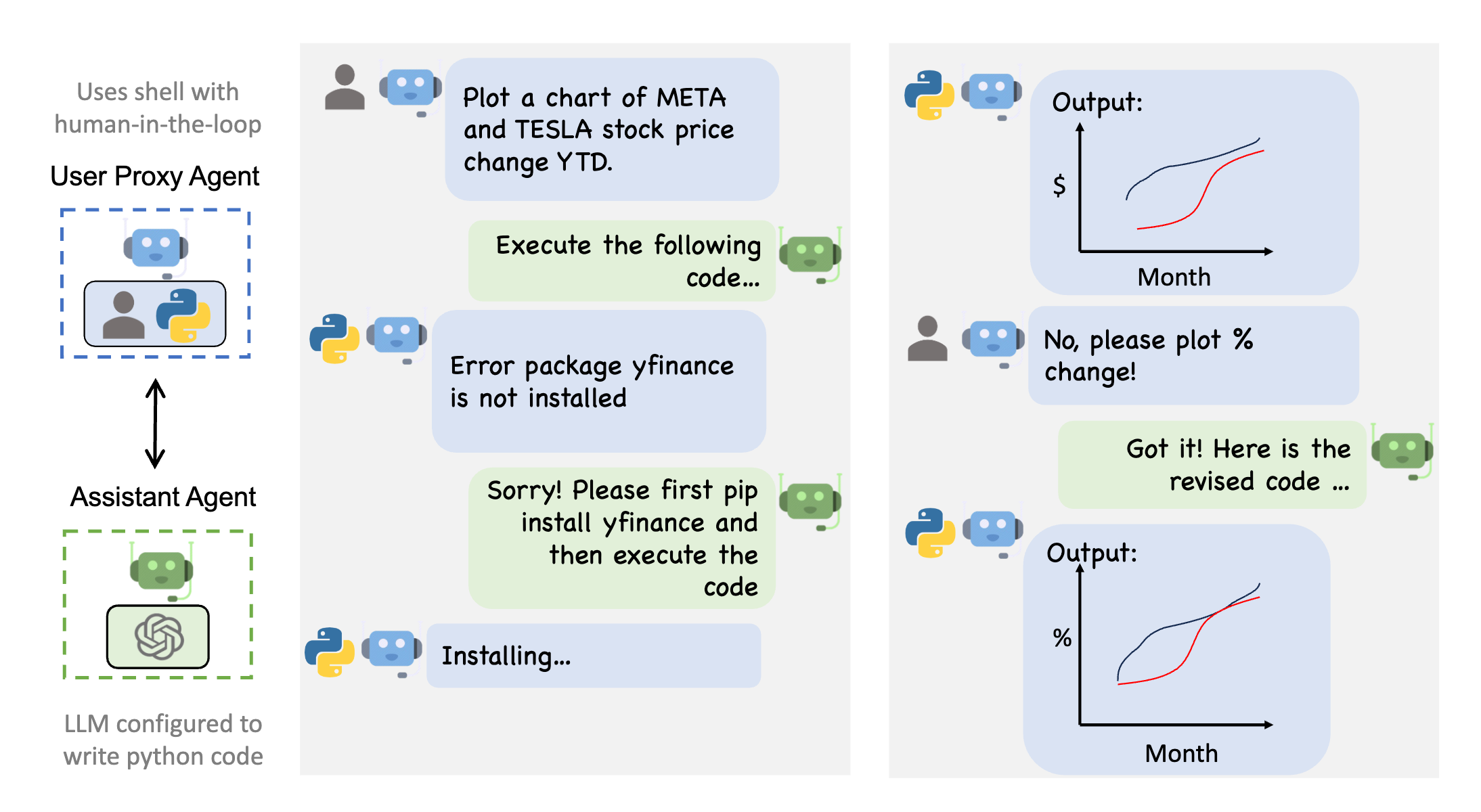Autogen4j: the Java version of Microsoft AutoGen
https://github.com/HamaWhiteGG/autogen4j
Java version of Microsoft AutoGen, Enable Next-Gen Large Language Model Applications.
1. What is AutoGen
AutoGen is a framework that enables the development of LLM applications using multiple agents that can converse with each other to solve tasks. AutoGen agents are customizable, conversable, and seamlessly allow human participation. They can operate in various modes that employ combinations of LLMs, human inputs, and tools.

The following example in the autogen4j-example.
2. Quickstart
2.1 Maven Repository
Prerequisites for building:
Java 17 or later
Unix-like environment (we use Linux, Mac OS X)
Maven (we recommend version 3.8.6 and require at least 3.5.4)
2.2 Environment Setup
Using Autogen4j requires OpenAI's APIs, you need to set the environment variable.
3. Multi-Agent Conversation Framework
Autogen enables the next-gen LLM applications with a generic multi-agent conversation framework. It offers customizable and conversable agents that integrate LLMs, tools, and humans.By automating chat among multiple capable agents, one can easily make them collectively perform tasks autonomously or with human feedback, including tasks that require using tools via code.
Features of this use case include:
Multi-agent conversations: AutoGen agents can communicate with each other to solve tasks. This allows for more complex and sophisticated applications than would be possible with a single LLM.
Customization: AutoGen agents can be customized to meet the specific needs of an application. This includes the ability to choose the LLMs to use, the types of human input to allow, and the tools to employ.
Human participation: AutoGen seamlessly allows human participation. This means that humans can provide input and feedback to the agents as needed.
3.1 Auto Feedback From Code Execution Example
Auto Feedback From Code Execution Example
The figure below shows an example conversation flow with Autogen4j.

After running, you can check the file coding_output.log for the output logs.
The final output is as shown in the following picture.

3.2 Group Chat Example
After running, you can check the file group_chat_output.log for the output logs.
4. Run Test Cases from Source
This project uses Spotless to format the code.
If you make any modifications, please remember to format the code using the following command.
5. Support
Don’t hesitate to ask!
Open an issue if you find a bug or need any help.











评论